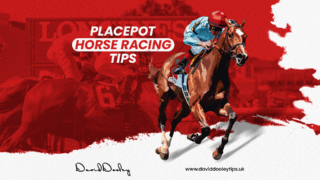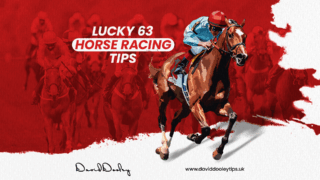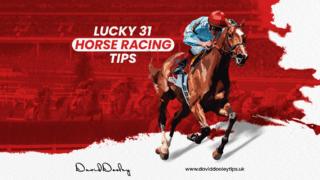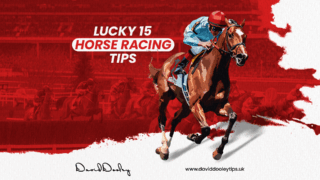Outsider horse racing tips focus on horses with longer odds that are often overlooked but have genuine potential to perform well. These horses offer greater returns because fewer people back them, which means you can find better value bets by identifying the right contenders. Understanding how to spot outsiders involves analysing form, conditions, and trainer and jockey performance.
You gain an edge by recognising factors such as race dynamics and ground conditions that can help outsiders outperform expectations. Since outsiders often come with high odds, you benefit from each-way betting strategies which provide returns if the horse places rather than just wins. This approach allows you to maximise value while managing the higher uncertainty involved.
Expert tipsters collect insider information and conduct detailed research, which means you can rely on their selections to uncover hidden opportunities. By using careful analysis focused on price and potential, you can improve your betting decisions and increase your chances of success with outsider tips.
Meeting | Time | Name | Bet Slip |
|---|---|---|---|
| Dundalk (IRE) | 18:25 | Sinbad My Dad | Add to BetSlip → |
| Haydock Park | 14:38 | Blue Fin | Add to BetSlip → |
| Lingfield Park | 14:30 | Legal Reform | Add to BetSlip → |
Contents
Understanding Outsider Horse Racing Tips
Outsider horses often attract attention due to their long odds, but understanding their profile requires insight beyond surface details. Factors such as bookmaker valuations, odds fluctuations, and race context influence how outsiders are perceived and selected by punters.
Definition of an Outsider in Horse Racing
An outsider is a horse with high odds that suggest a low probability of winning. This means most punters expect the horse to finish behind favourites based on past performances or current form. However, outsiders can still show potential if you examine their track record carefully.
The term refers to horses often ignored in betting markets because they haven’t recently demonstrated strong results or consistent improvement. Yet some outsiders possess hidden strengths like adaptability to certain track conditions or an improving trend in form, which might not be obvious without detailed scrutiny.
Your ability to spot an outsider that offers value depends on recognising these factors instead of relying solely on odds or public perception.
Why Bookmakers Undervalue Outsiders
Bookmakers set odds based on several elements including recent horse form, market demand, and known jockey skills. Outsiders tend to be undervalued because bookmakers weigh heavily on mainstream indicators that suggest lower chances of winning.
Since many punters focus on favourites, bookmakers adjust odds to balance betting amounts. When an outsider’s potential is overlooked, it creates opportunities for those who perform deeper analysis. This means the public’s betting patterns shape odds and can cause outsiders to be priced higher than their actual chances.
Understanding this dynamic allows you to identify value picks that bookmakers have mispriced due to market bias or incomplete assessment of a horse’s potential.
The Role of Odds in Outsider Selections
Odds represent the bookmaker’s expectation and also influence the market perception of a horse’s winning chances. Higher odds indicate a lower expected chance, but they also imply greater potential returns if the outsider performs well.
You should treat odds as a signal rather than a certainty. Changes in odds can reveal shifts in market confidence or new information such as jockey changes or weather effects. Monitoring odds movement helps you determine if the outsider is gaining backing, which might suggest overlooked factors improving its chances.
Smart punters combine odds with detailed research on horse form, race conditions, and trainer expertise to make selections that offer value rather than chasing simply long prices.
Key Strategies for Backing Outsiders
Backing outsiders requires careful attention to pricing, form, and betting options to maximise value. Successful betting depends on recognising where bookmakers undervalue horses, analysing performance trends beyond headline results, and using betting types that balance potential returns and losses.
Spotting Value in the Betting Markets
You should focus on identifying value bets, where the odds offered exceed the horse’s true winning chance. This means not automatically dismissing long odds but evaluating whether the market has overlooked important factors like better track conditions or recent fitness improvements.
Pay attention to shifts in market prices; sudden drops in odds could signal insider knowledge or increased confidence from punters. Also, compare odds across different bookmakers and tipsters to find discrepancies that reveal opportunities.
Using betting combinations such as Lucky 15s can help spread your stakes across multiple outsiders, allowing you to capitalise on individual value bets while managing overall exposure.
Analysing Race Form and Trends
Thoroughly review a horse’s past performances, looking beyond recent poor results to identify patterns of improvement or inconsistency. Focus on conditions such as race distance and track type where the outsider has shown stronger form.
Check the effectiveness of the jockey and trainer combination, especially their record with outsiders. Their expertise often influences an underdog’s potential.
You should monitor trends in the racing calendar; some horses perform better during certain periods or in specific race classes. This allows you to find outsiders likely to perform above market expectations due to favourable circumstances.
Effective Each-Way Betting Techniques
Each-way bets offer a balanced approach by covering both winning and placing possibilities, increasing chances of return when backing outsiders.
You must select races where the place terms are generous and the field size supports viable each-way bets, such as handicaps with 12 or more runners. This improves the potential payout even if the horse doesn’t win.
Consider combining each-way bets with data from tipsters who specialise in outsider selections, as their insights can inform which horses are undervalued. Applying this methodology carefully can help stretch your betting budget by minimising losses across several wagers.
Top UK Racecourses for Outsider Opportunities
Certain UK racecourses offer better chances for outsiders to perform well due to unique track conditions and race formats. These courses see unexpected results more often, which can translate into valuable each-way betting opportunities. Understanding the characteristics of these courses helps you spot where longshot horses could surprise the favourites.
Aintree Outsider Betting Insights
Aintree is famously home to the Grand National, a race known for its demanding fences and large field. Its course layout increases the likelihood of upsets as stamina and jumping ability often outweigh pure speed. This means outsiders with strong endurance and sound jumping form can exploit the more challenging conditions.
You should focus on horses with proven stamina and experience on heavy or soft going here. Long odds runners are common, which means bookmakers often underestimate them. The unpredictable nature of Aintree’s National course rewards those who use form analysis combined with insights about the ground and fence suitability.
Cheltenham’s Notable Longshot Winners
Cheltenham Festival racing is a specialist test where outsiders can emerge due to the complex course and stiff competition. The track’s undulating terrain and sharp fences demand a combination of speed, agility, and jumping, causing favourites to falter and outsiders to flourish sometimes.
You benefit from watching horses with unexposed potential or those trying new distances under top trainers. Dark horses often perform better here because their abilities may not be fully reflected in the odds. Historical data shows outsiders with correct preparation can clinch major races, making Cheltenham a rich venue for value bets on longer-priced runners.
Famous Outsider Successes in British Racing
Outsider wins have shaped British racing history by delivering unexpected results that reshaped betting markets and caught punters by surprise. These successes at key venues reveal how long shots can disrupt expectations and offer substantial returns for those prepared to back them.
Memorable Grand National Shocks
The Grand National is notorious for its unpredictability, which means outsiders often make headlines. Horses with odds well above 33-1 have seized victory, overturning favourite dominance and proving that course complexity rewards underdogs.
For example, Monbeg Genius triumphed with longer odds in recent Grand Nationals, showing that stamina and course adaptability often outweigh reputation. Such results mean you should monitor form and conditions carefully, as overlooked runners with proven endurance can outperform.
Grand National outsiders succeed because the race demands specific attributes like jumping accuracy and staying power, which traditional odds sometimes undervalue. This unpredictability provides chances for higher returns, especially when you diversify your bets or apply each-way stakes.
Historic Upsets at Ayr and Newbury
Ayr and Newbury have hosted many historic outsider victories, often altering how punters approach races on their racing days. At Ayr, horses unconsidered by most analysts have unexpectedly taken top spots, especially in handicap races where weight penalties even the field.
Newbury has seen outsiders benefit from race conditions such as ground softness or jockey changes, factors not always reflected in betting odds. These surprises show that detailed form analysis and local knowledge improve your chances of spotting value.
You should focus on recent performances, ground reactions, and stable form when considering outsiders at these venues. Track-specific traits and conditions substantially influence results, leading to profitable outsider bets when factors align in their favour.
Remarkable Wins at York
York’s prestigious meetings have witnessed several remarkable long-shot wins, providing examples of how outsiders can emerge in competitive fields. Unlike larger handicap races, York’s conditions sometimes favour horses with less obvious credentials, especially when race pace suits their running style.
Notable outsider winners there have often had strong breeding suited to the course’s unique demands or improved form pattern soon before their wins. These wins underline the importance of breeding insight and current trainer performance in spotting likely outsiders at York.
York races highlight that success is linked to understanding dynamics such as jockey-trainer partnerships and race tempo. You can identify valuable outsider bets by analysing these variables alongside odds, enabling smarter stakes on lesser-fancied runners.
Expert Insights: Evaluating Tipsters and Betting Advice
Knowing how to assess tipsters and their advice is vital for making informed decisions with outsider horse racing bets. You need to understand which strategies proven tipsters use, the value of consensus among tips, and how different selections like nap tips compare with outsider choices.
Recognising Reliable Tipster Strategies
Reliable tipsters base their advice on thorough form analysis and track data, which means they study recent horse performances and relevant race conditions. They also consider trainer and jockey statistics, as these can significantly influence outcomes.
Another key strategy is monitoring market movements, where sharp shifts in odds may reflect insider knowledge. Tipsters who disclose their reasoning and follow consistent methods tend to offer more trustworthy selections.
Additionally, successful tipsters often recommend each-way or multiple bets like lucky 15s to balance risk and reward. You should favour advice that includes such practical betting strategies rather than blind tips.
The Role of Consensus Tips
Consensus tips arise when multiple reputable tipsters recommend the same horse or bet type, which can increase confidence in the choice. This alignment suggests underlying value or overlooked potential in the selection.
You should view consensus as a form of crowd validation because it reduces individual bias, making it more likely the bet is worthwhile. However, consensus does not guarantee success and should be combined with your own research.
Consensus tips are particularly useful in complex races where outsider horses might not stand out individually but show promising attributes collectively. Use consensus insights as a tool to highlight value bets or confirm your picks.
Comparing Nap Tips with Outsider Selections
Nap tips focus on the best expected single winner of the day, often a favourite or a well-backed contender, aiming for high reliability. Outsider selections, by contrast, involve horses with longer odds who might offer larger payouts if they perform well.
You must understand that naps deliver steady returns on safer bets, while outsider tips are inherently riskier but can significantly multiply winnings. Each tip type serves a different betting approach depending on your appetite for risk and desired outcomes.
For example, combining outsider bets in lucky 15 accumulators alongside nap picks can diversify your portfolio and increase your chances of overall profit. Both methods require careful selection and sensible stake management to be effective.
Building Your Own Outsider Betting System
Constructing a reliable betting system requires attention to several key elements. You should define precise rules for picking bets, keep detailed records of your wins and losses, and stay alert to common mistakes that can erode your profit potential.
Customising Selection Criteria
You must identify clear selection criteria based on horse form, odds, and race type. Focus on outsiders showing past strong performances in higher-class races or those beating well-regarded rivals. It helps to track horses with recent dips in form but a good official rating.
Use a limited timeframe for form analysis, such as the past three to six months, to avoid diluted data. Pay attention to race conditions like distance and track, as these influence outsider chances. Avoid popular favourites that skew betting markets, allowing you to target horses with underestimated value.
Tailoring these rules to your own betting style makes your system manageable and consistent.
Tracking Performance and ROI
You should regularly record your selections, stake size, and outcomes to measure your system’s effectiveness. Detailed records allow you to calculate your return on investment (ROI) and assess whether your choices generate long-term profit.
Track key metrics such as win percentage, average odds, and total profits or losses. This helps you spot trends and adjust your criteria if needed. Consistency in tracking also prevents emotional decision-making, which can lead to chasing losses or deviating from your plan.
Regular review ensures your system remains aligned with changing race conditions and market behaviour.
Avoiding Common Pitfalls
Be cautious of betting on too many outsiders at once, as this spreads stakes thin and reduces potential returns. Sticking to races with a moderate number of runners, such as four to eight, improves your chances of finding genuine value.
Do not rely heavily on gut feeling without supporting data, since emotional bets often result in losses. Avoid extending form analysis beyond six months, because older results rarely reflect a horse’s current capability.
Be mindful that betting markets can quickly adjust prices when insider information spreads, so act promptly and disregard overly popular horses. Maintaining discipline and clear rules helps you avoid these common mistakes.





